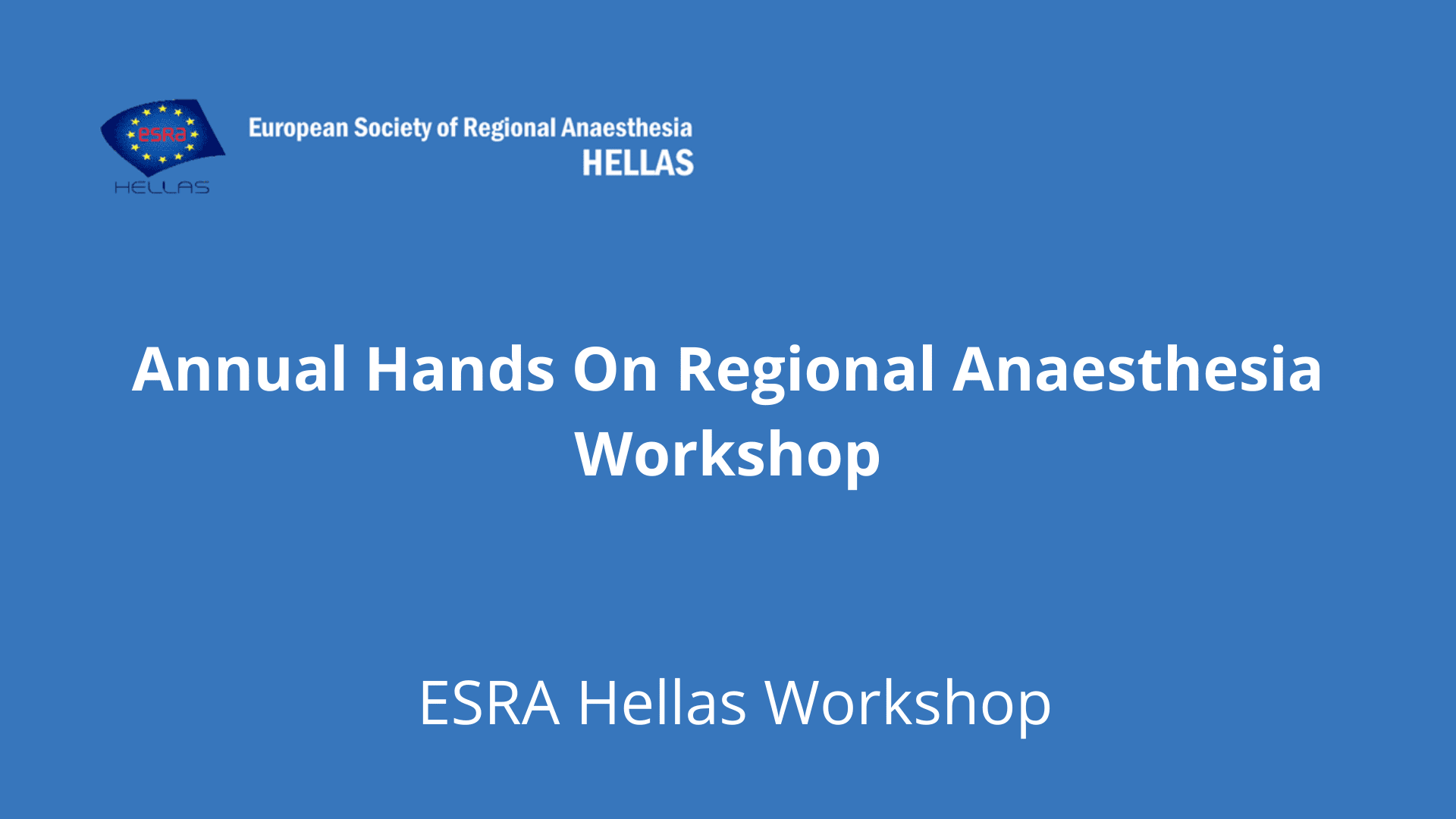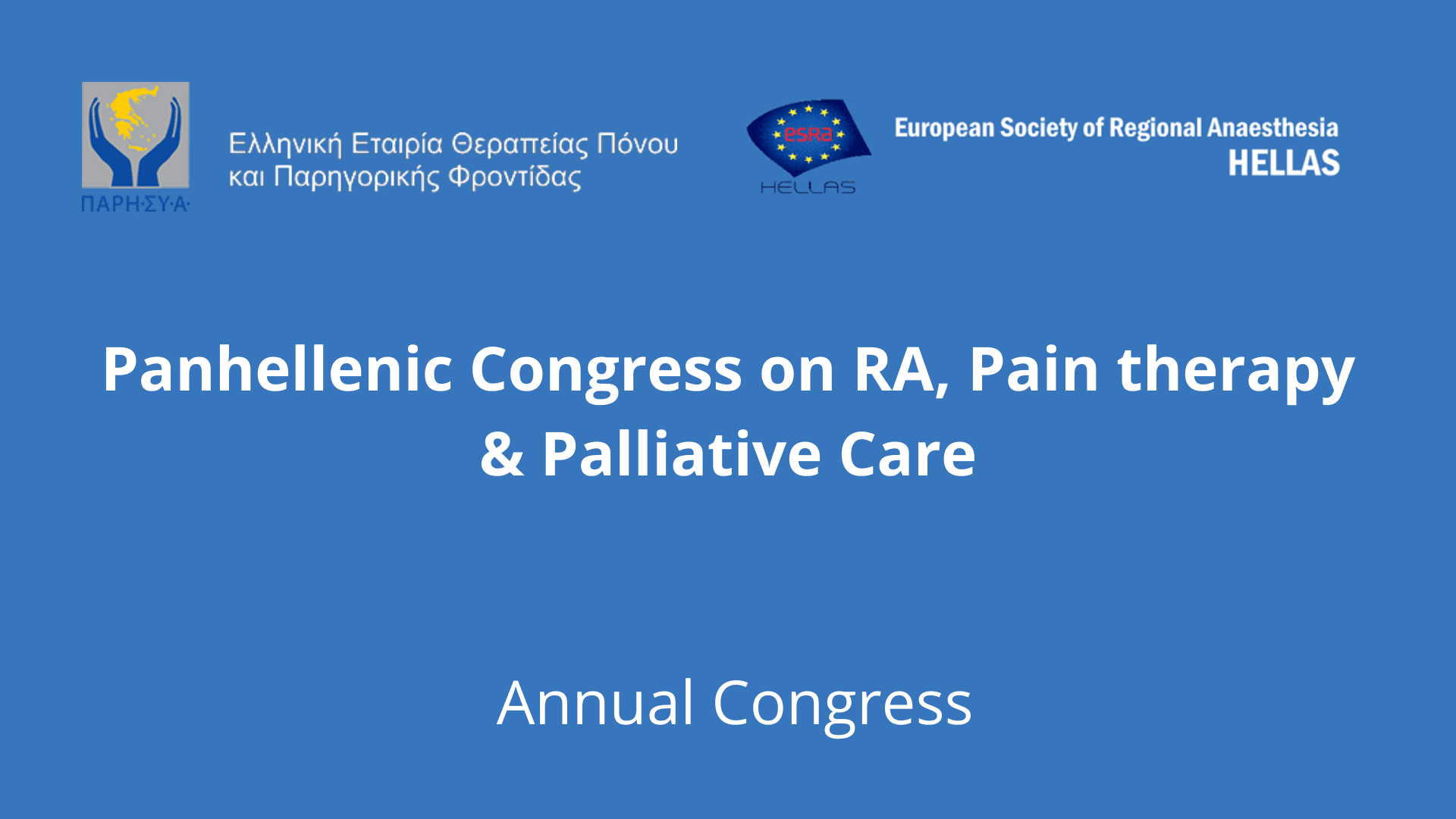Research – RA Application in Greece

Greek Section of European Society of RA & Pain Therapy (ESRA Hellas)
REGIONAL ANAESTHESIA APPLICATION IN THE GREEK TERRITORY
ESRA Hellas MULTICENTER STUDY
The Greek Section of the European Society of Regional Anaesthesia, ESRA Hellas, among its activities, performed a first attempt of recording and documentation of Regional Anaesthesia Application in Greek Hospitals, Public and Private, in both the center and the periphery of Greece. Our effort was based on the contribution of anaesthesia departments of the whole country, through completion of the relevant questionnaire, which is attached, along with the results obtained from our research. The results of our research were presented as a free announcement during the 14th Panhellenic Congress of Regional Anaesthesia, Pain and Palliative Care (Costa Navarino, Messinia, October 2012), while, the 2nd Prize for the Best Presentations of the Conference was awarded to our announcement. Additionally, preliminary results have been presented as an E- Poster, in ESRA Annual Congress, in Glasgow – UK, in 2013.
Below, one can find the main points and the most important results of our study.
Acknowledgements
At this point, we would like to codially thank all Greek Anaesthesiologists who participated in our survey, for their the active, positive and important contribution, and for the quick response, as without their help it would be impossible to perform this study.
- E Poster ESRA Annual Congress 2013
- Questionnaire
- Hospitals that participated in the Study
- Study Results
- Presentation of the Study – Power Point Slides
All data are presented in the respective publication.
For more information click here.
PRESENTATION OF ESRA Hellas Research Project
Context: Regional Anaesthesia Techniques (Central Neuraxial and Peripheral Nerve Blocks) are well established modalities for surgical anaesthesia, offering multiple advantages during perioperative patient management. However, information on their nation–wide extent of use is sparse in literature, at National, European or International level.
Objective(s): Survey documenting Regional Anaesthesia application rates, in Greek Hospitals, during the year 2011.
Design: Multicenter, Nation–Wide, Retrospective, Cross–Sectional Survey, based on a Structured Predefined Questionnaire (emailed to participating collaborators).
Setting: Greek Anaesthesiology Departments of Public and Private Hospitals
Participants: Chairmen of 128 of the 230 existing Greek Anaesthesiology Departments (Collaborators).
Intervention: Survey from March 1st to June 30th 2012.
Main Outcome Measures:
: Primary Endpoint: Documenting extent of Regional Anaesthesia application in Greece and categories of surgery it is used for. Secondary Objectives: Identifying possible differences and factors influencing its application between hospitals.
Methods: Descriptive and comparative analysis of received data.
Results: Questionnaires were returned by 66 Departments (response rate 51.56%), representing all Greek Hospitals categories and all country geographical regions. Data analysis was mainly based on feedback from 40 Public Hospitals, incorporating 182.007 operations (approximately 40% of those performed during 2011 in the Public Sector–461.676), since responders from the Private Sector, in the vast majority, did not perform Regional Anaesthesia. In the Public Sector, regional techniques were applied for surgical anaesthesia in 45.8% of reported procedures. Spinal was the main technique of choice in orthopaedic surgery (application rate 52% over 83.265 Regional Anaesthesia procedures). Epidural (application rate 23.3%), was mostly used in obstetrics–gynaecology procedures. Combined–Spinal–Epidural and Peripheral Blocks were less commonly instituted (11.2% and 13.5% of regional techniques respectively). Lower extremities blocks were more frequently used versus those for upper limb surgery. Among 345 Greek Senior Anaesthesiologists, the majority (94.49%) are very familiar with central neuraxial techniques, whereas almost half of them (46.38%) declare peripheral blocks application capability into their routine practice. Limited exposure to equipment–techniques and lack of education–training were basic causative factors for underutilization (percentages of 58.23% and 49.29% respectively).
Conclusions: This Survey discloses important issues regarding Regional Anaesthesia use, documenting its common application in Greece, although all Greek Anaesthesiologists do not routinely practice all techniques. Among neuraxial blocks, Spinal was highly preferred for selected surgical procedures, followed by Epidural and Combined–Spinal–Epidural, while Peripheral Blocks, particularly of upper extremities, were underused. A more concise Questionnaire may be necessary for better reporting in the future.






